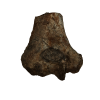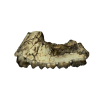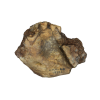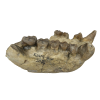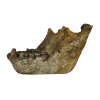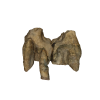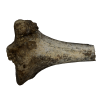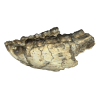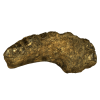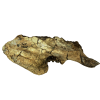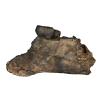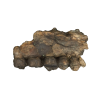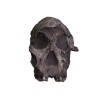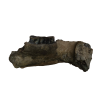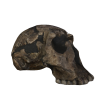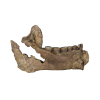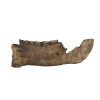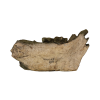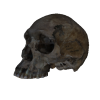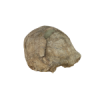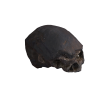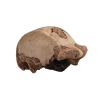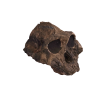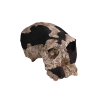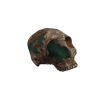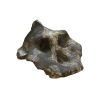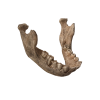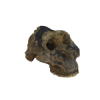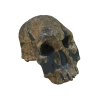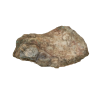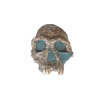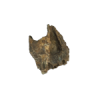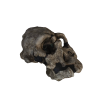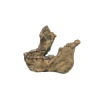This is the proximal end of the tibia (bone of the lower leg) of Australopithecus anamensis, a 4.16 million year hominin from Kanapoi. It goes with the distal end of this same bone however the mid potrion of the shaft of this specimen was never found despite a large excavation. The important discovery of the proximal tibia (bone of the lower leg) of Australopithecus anamensis, meant that it was possible to determine that this species was indeed bipedal and therefore is classified as a hominin. It is still the most secure earliest evidence for bipedality, at 4.1 million years.A weight bearing bone has a distinctive morphology and if you study this proximal tibia and compare it to the same bone in a primate that walks on four legs (such as a baboon or a chimpanzee) you can see that it is much more robustly built beneath the articular surface.
Kanapoi is a site to the south west Lake Turkana, an area of undulating hills covered in basalt pebbles that cover the sedimentary deposits. The pebbles make it extremely difficult to spot any fossils on the surface. The type specimen of Australopithecus anamensis, is a mandible with complete dentition. The mandible exhibits some primitive ape like features, in particular the very parallel tooth rows.



